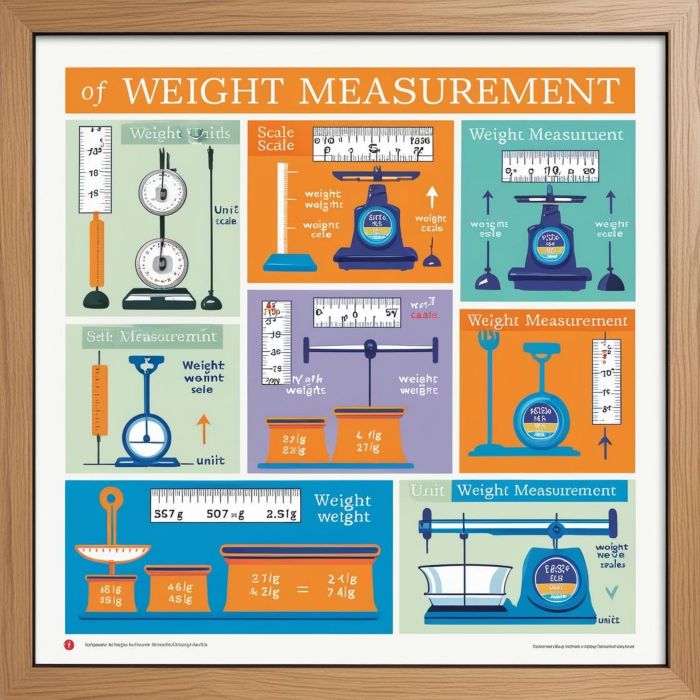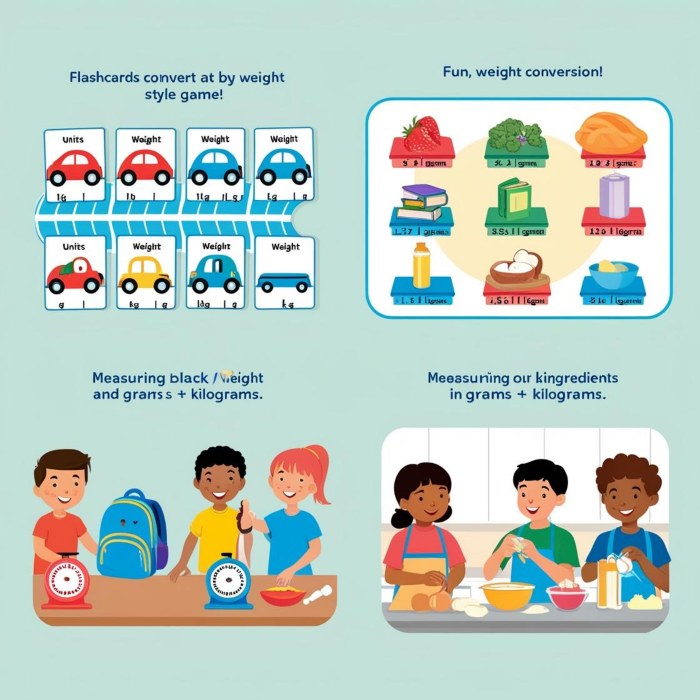Measurement of Weight: Conversions and Operations

Measurement, especially weight, is one of the important concepts about Grade 4 mathematics. Knowing how to measure and convert weights and perform operations on weights is not only critical in solving real-world problems but also serves as a basis for further rigorous math works later.
Measuring weight: This blog post explains some of the important concepts pertaining to the measuring of weight, including some unit conversions and operations on weight. It is a fun way to make learning exciting for young students.
What Is Weight?
Weight is the measurement of how heavy or light something is.
Weight is measured in units such as
-
Milligrams (mg). Used for very small weights, for example, a paperclip
-
Grams (g). Used for lighter objects, for example, fruit, small packages.
-
Kilograms (kg): For heavy objects like animals, sacks of cereals, self weight.
Why do we need to know weight?
-
Shopping for groceries: The student needs to calculate the number or price of groceries by knowing its weight.
-
Cooking: Recipes normally indicate certain weights that certain ingredients should fall into.
-
Traveling: One cannot travel without weighing their luggage. If it is heavier than the allowed weight, one will have to pay extra baggage charges.
Unit Conversion: The Basic Building Block of Weight Measurement
In Grade 4, students must convert among various units of weight. It may sound challenging, but it is simple once you know how various units of weight are related to one another.
Key Conversion Factors:
-
1000 milligrams (mg) = 1 gram (g)
-
1000 grams (g) = 1 kilogram (kg)
Examples:
Convert 5 kilograms to grams:
Since 1 kg = 1000 g,
5 kg = 5000 g.
Convert 3200 grams to kilograms:
Since 1 kg = 1000 g,
3200 g ÷ 1000 = 3.2 kg.
By mastering the measurement and conversion of weights, you easily switch between units - whether it's for baking a cake or weighing some shipment!
Operations on Weight: Addition, Subtraction, Multiplication, and Division
Once the unit of measurement has sunk into the minds of the learners, they can begin performing operations on weight. Operations are just like other math problems but with real-life weight applications .
Addition and Subtraction on Weight:
Addition: Adding two or more weights in the same unit (grams, kilograms, etc.).
Example:
2.5 kg (flour) + 1.8 kg (sugar) = 4.3 kg
Subtraction: The subtraction of one weight from another.
Example:
5 kg (watermelon) - 1.2 kg (eaten) = 3.8 kg left
Multiplication and Division with Weight:
Multiplication: Use if you have several identical items with the same weight.
Example:
300 g (cereal box) × 8 boxes = 2400 g or 2.4 kg
Division: Use if you have to share one weight into equal shares.
Example:
2 kg (flour) ÷ 5 portions = 0.4 kg per portion or 400 g per portio
Making Connections: Real-Life Applications
Knowledge of weight measurement will enable a student to transfer learned knowledge into daily life.
Practical Experiments
-
Shopping for groceries
If the potatoes are sold in 500 gram bags and you need 3kg of potatoes;
3000g / 500 g per bag = 6 bags
-
Baking and Cooking
2 kg of flour is needed in a recipe and students will have to measure ingredients in grams or kilograms.
-
Packing for a trip
If the weight limit of their luggage is 20 kilograms, then the students have to weigh their luggage and not overpack.
Good Foundation Building in Measurement through Weight
Practicing conversion and operations on weights will bring Grade 4 students great ability in measurement. These will help them solve everyday problems: from cooking, buying groceries, buying shoes, going to travel, etc.
Fun Activities:
Fun Games on Conversion of Weight:
Make flashcards of different units of weight and challenge the student to convert them into some other unit in a racing game.
Real-Life Measurement Projects:
Have the students measure the weights of different things at home, like the backpack or books or food, and write down their weights in grams and kilograms.
Cooking Math:
Join with your students any cooking or baking where the recipe calls for the actual measurement of specific ingredients in grams and kilograms.
Quiz: Test Your Knowledge
2.5 kg = ?
-
a) 25 g
-
b) 250 g
-
c) 2500 g
-
d) 200 g
A bag weighs 1.8 kilograms. You need to divide it into 3 equal portions. How many kilograms will each weigh?
-
a) 0.6 kilograms
-
b) 0.8 kilograms
-
c) 0.4 kilograms
-
d) 1.2 kilograms
What are 4 kilograms in grams?
-
a) 400 grams
-
b) 4000 grams
-
c) 40 grams
-
d) 40,000 grams
A watermelon weighs 3.5 kilograms. You eat 1.2 kilograms of it. How much watermelon is left?
-
a) 2.3 kg
-
b) 2.5 kg
-
c) 4.7 kg
-
d) 3.7 kg
A chocolate bar weighs 150 grams. How many chocolate bars will you have if you have a total of 2 kilograms of chocolate?
-
a) 12 bars
-
b) 15 bars
-
c) 10 bars
-
d) 8 bars
FAQs
1. Which are the two operations for weight conversion?
Multiplication: Multiply by 1000 when converting from a smaller unit, such as grams to a larger unit, like kilograms.
Division: When you convert from a larger unit, e.g. kilograms to a smaller unit, e.g. grams you divide by 1000.
2. What is the operation of converting weight?
To convert weight multiply or divide using the conversion factor, e.g., 1 kg = 1000 g
Convert both units to have the same measurement scale before converting
3. What are the two types of measurements?
Linear Measuring: Measures length, width or height, e.g. meters centimetres.
To Measure Weight: Measures how heavy or light something is, such as grams, kilograms, milligrams, etc .
4. How do you convert measured quantities?
Use a known conversion factor, such as 1 kg = 1000 g
Multiply or divide depending upon whether you are converting to a larger unit or a smaller unit.
Practice Worksheet
Easy Level Worksheets
IntermediateLevel Worksheets
Advanced Level Worksheets
Related Links
CBSE Schools In Popular Cities
- CBSE Schools in Bangalore
- CBSE Schools in Mumbai
- CBSE Schools in Pune
- CBSE Schools in Hyderabad
- CBSE Schools in Chennai
- CBSE Schools in Gurgaon
- CBSE Schools in Kolkata
- CBSE Schools in Indore
- CBSE Schools in Sonipat
- CBSE Schools in Delhi
- CBSE Schools in Rohtak
- CBSE Schools in Bhopal
- CBSE Schools in Aurangabad
- CBSE Schools in Jabalpur
- CBSE Schools in Jaipur
- CBSE Schools in Jodhpur
- CBSE Schools in Nagpur
- CBSE Schools in Ahmednagar
- CBSE School In Tumkur












